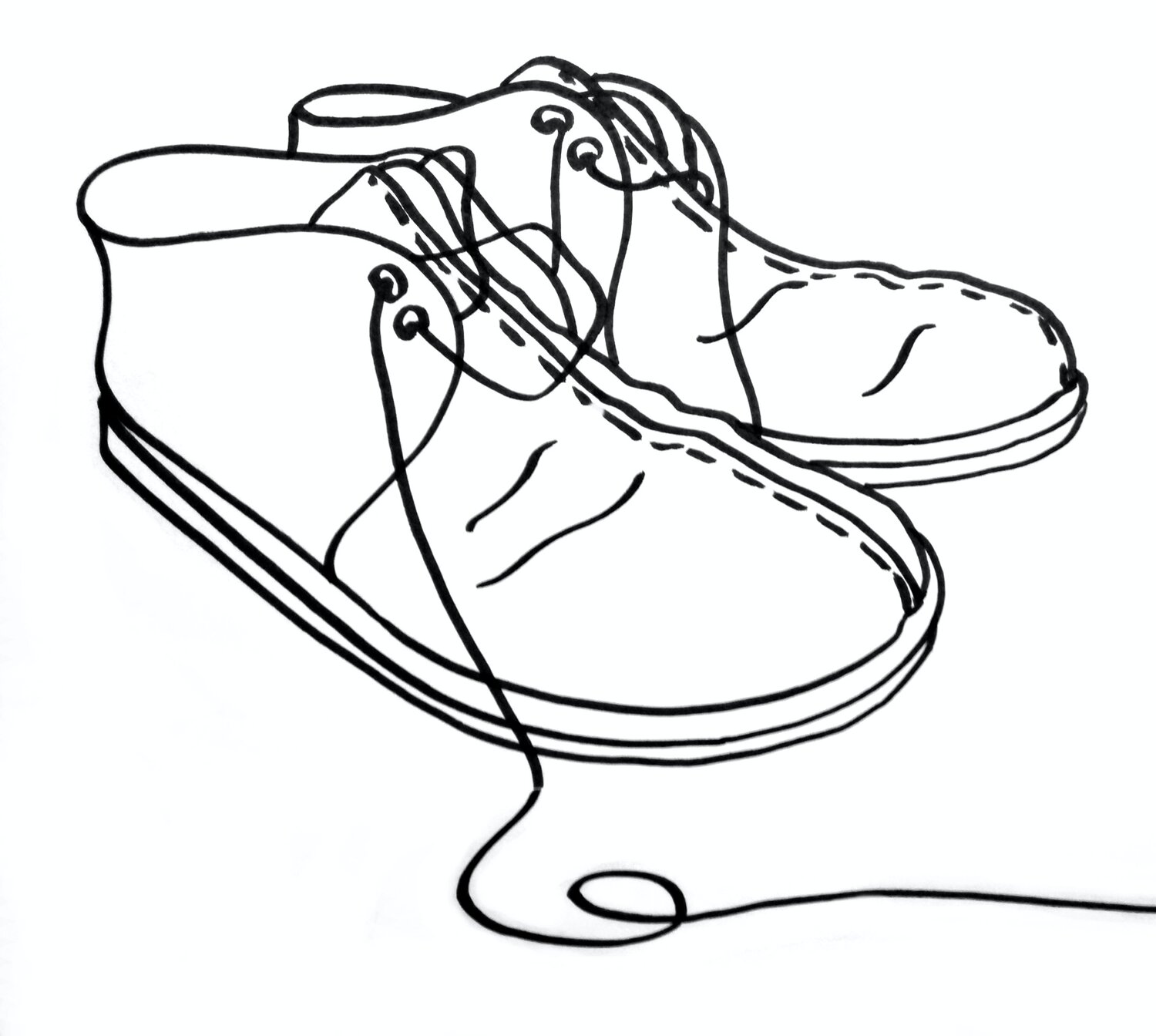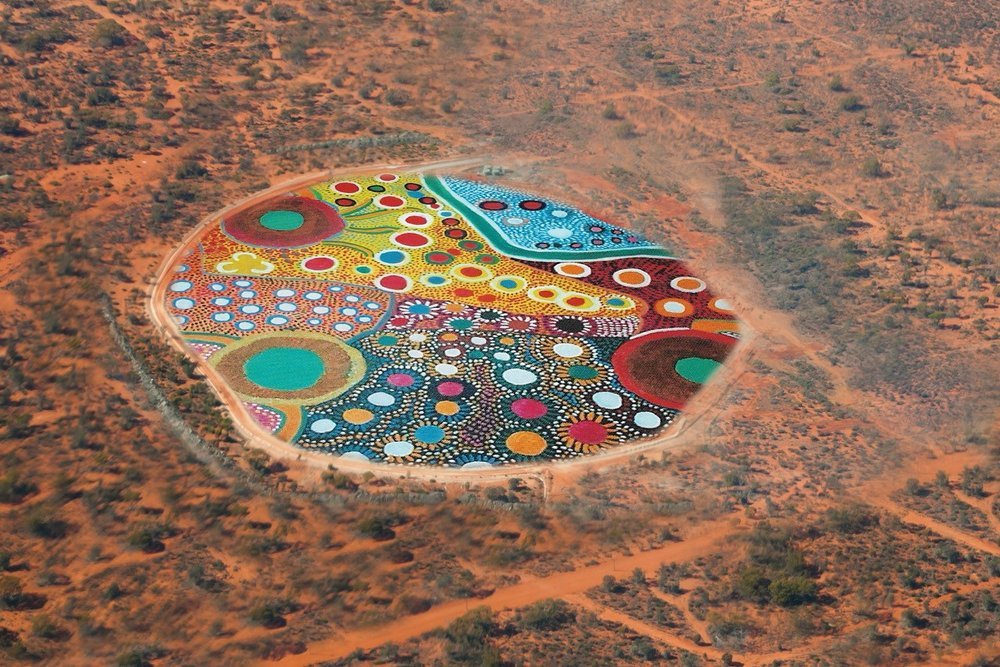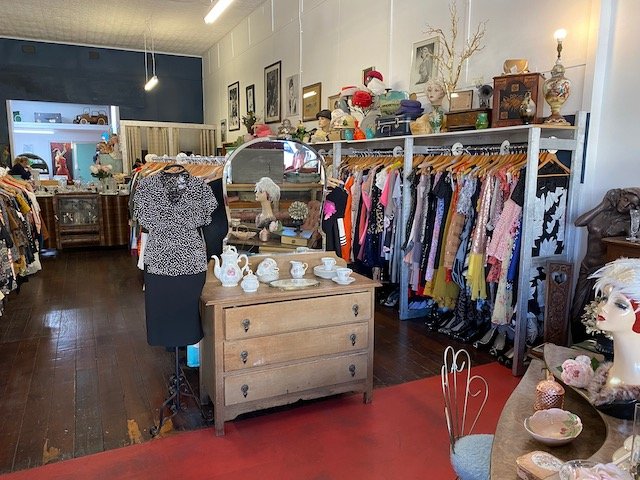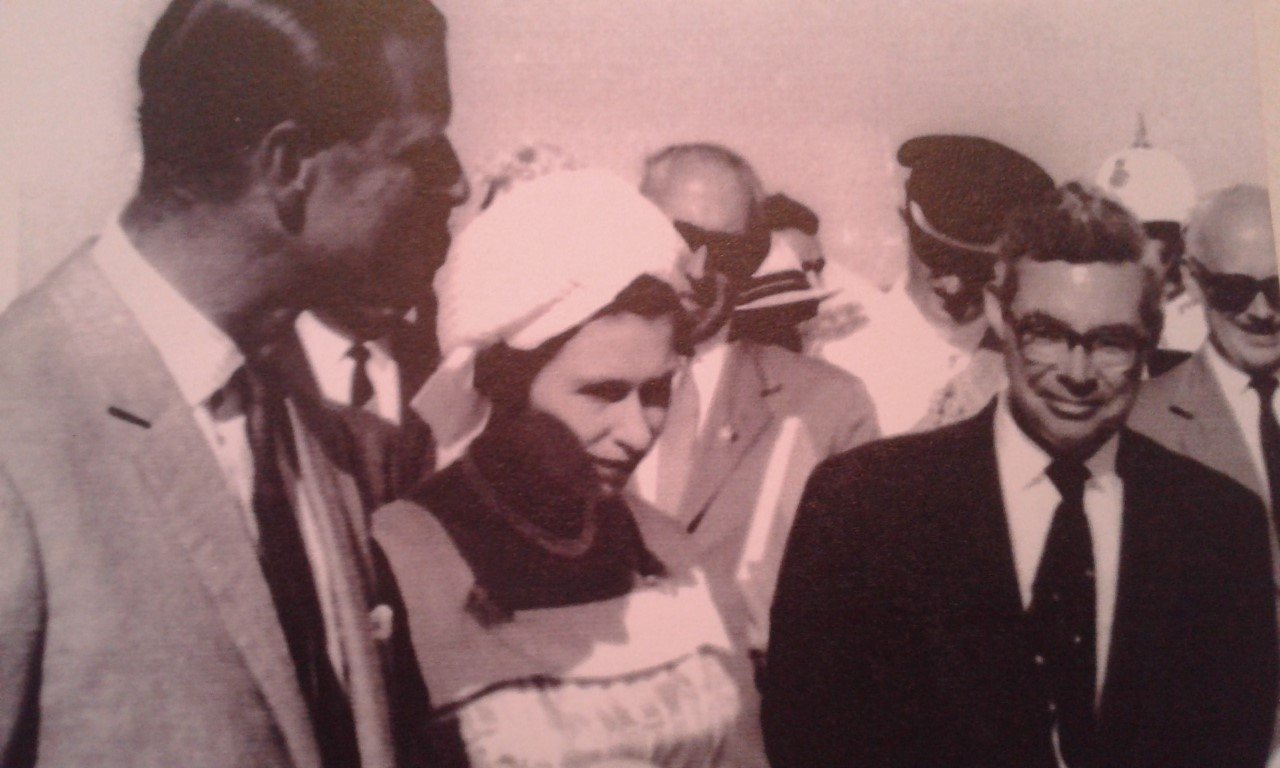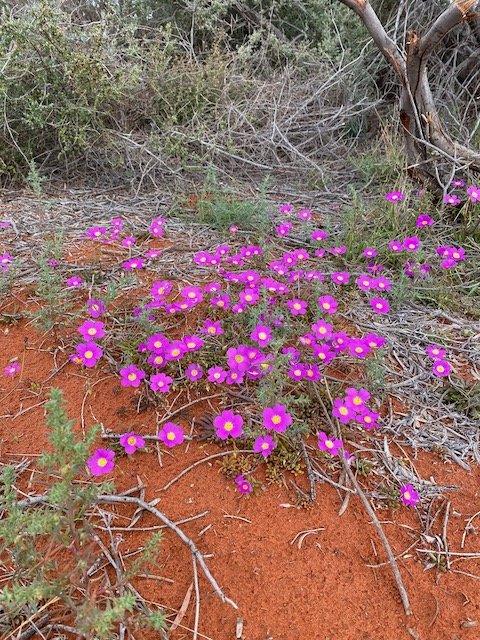Weaving and Healing: Finding My Place in the Decolonising Narrative
(5,900 words: 30-40 minute read)
This article was updated on the 9th January to incorporate further research and clarification relating to Australian First Nations beliefs and practices.
In September this year, like so many others, I learned of the death of Queen Elizabeth II. The news felt particularly poignant because I had been participating in a weaving retreat in remote Western Australia at the time - a creative project contributing to the reconciliation of the impacts of colonialism. Standing there, ‘on Country’, with red dirt beneath my bare feet, I felt the impact of Queen Elizabeth’s death in an unexpected and revealing way. As the dust settles on another challenging year, and, as so many of us look to move forward with positivity and purpose, it seems important to take a moment to reflect.
We often remember the moment a monarch dies. Whether it be the King of Rock ‘n’ Roll, the ‘People’s Princess’ or the Queen of England, if the death was significant to us and elicited an emotional response it becomes etched in our memories; evocatively recalled by the place or activity we were engaged in when we first heard the news. Through the stories that emerge, these moments provide an invaluable opportunity to learn about ourselves and others.
No matter one’s background, it is difficult to deny the significance of the Queen’s death. For many, the outpouring of respect paid to the British monarchy, as seen in the many tributes at the time, has been difficult to bear. In Australia, where I currently live, injustices to Aboriginal and Torres Strait Islander Peoples are within living memory, raw and still largely unreconciled. Inequality is still widespread, and although the work of reconciliation is underway, progress is slow and still lacks meaningful and significant action.
In the higher education sector, the Queen’s passing bears particular relevance to ongoing calls to decolonise the curriculum. As a University lecturer, I feel passionate about the need to decentralise white Western history, knowledge and ways of knowing in the arts, humanities and social sciences. Indeed, the field in which I teach, fashion and textiles, provides a wonderful opportunity to engage with and raise awareness of First Nations cultures and knowledge. Yet, while my sociology and anthropology background has perhaps never been more useful, my identity as a white Anglo-Saxon British academic has often felt conspicuous and awkward.
When the Queen died, I became conscious of my uncertainty about my place in this decolonising narrative. It wasn’t so much the fact she had died – something we’d been expecting for some time – it was how and where I received this news that had the most profound impact in helping me to reflect on my place in Australia and my potential role in the ongoing work of reconciliation.
Reclaiming the Void
Earlier this year, a link for a rug-weaving retreat in remote Western Australia fortuitously found its way to me in Melbourne via my mother in the UK. While I don’t often take my mother’s suggestions seriously (sorry mum) the timing of this one was unusually apt. If truth be told I was feeling quite lost at the time; pressures at work paired with mothering two small children through COVID had made the possibility of time away particularly appealing – a creative adventure to re-discover myself.
I had wanted to learn more about First Nations cultures and Country since arriving in Australia in 2015. While books, documentaries and professional development initiatives at work had taken me part of the way, the project offered more; an opportunity to address a ‘desire for healing country, healing community, and healing ourselves’ (reclaimthevoid.com.au, 2022: online).
The idea of learning and healing while also making an impact really appealed to me, and the fact this was all done on Country - far away from distractions, devices and home comforts - seemed particularly significant. In spite of the distance, the potential cost and the fact that I traditionally hated camping (and creatures that bite), it was perfect. I knew I had to find a way to go, or, as the retreat’s leader Vivienne later put it, I had been ‘called to Country’.
Reclaim the Void is a cross-cultural collaborative project born from discussions with Ngalia elders in Leonora, in the Northern Goldfields of Western Australia, during which they expressed their pain and grief at the gaping mining holes left all over their Country.
The project was conceptualised by artist and creative director Vivienne Robertson, and through ongoing collaboration with Ngalia cultural custodian and artist Kado Muir, they saw it as a symbolic gesture to ‘seal’ a mining pit with a large-scale ‘dot’ artwork. Inspired by a homemade rag rug, brought to a gathering on Country by Artist Lucy Ridsdale, the artwork will be made of thousands of circular rugs woven from discarded fabric. Due for completion in early 2024, the rugs, handmade by people from all walks of life, will be joined together to form a pattern that carries the story of the Tjukurrpa (Dreaming) of the country on which the pit is situated. The pattern will be based on an original painting by Ngalia artist Dolly Walker, who spent her life fighting to protect Country and culture. With my previous life as a textile designer, the project’s aim to ‘weave country whole’ certainly spoke my language.
With only a few weeks to go, I was excited to find that places were still available for the first of two retreats near Leonora so I booked my flights, and, since the environmental impact of the four-hour journey somewhat undermined the retreat’s intentions, I made sure to pay the carbon offsetting fee.
Unfortunately, due to my responsibilities at home, I was only able to attend the first four days with a day for travelling on either side, but, as any parent of small children will know, even the travelling was a welcome opportunity for a break. I borrowed a backpack with all the camping equipment I needed from my more experienced friends and before I knew it, it was time to go.
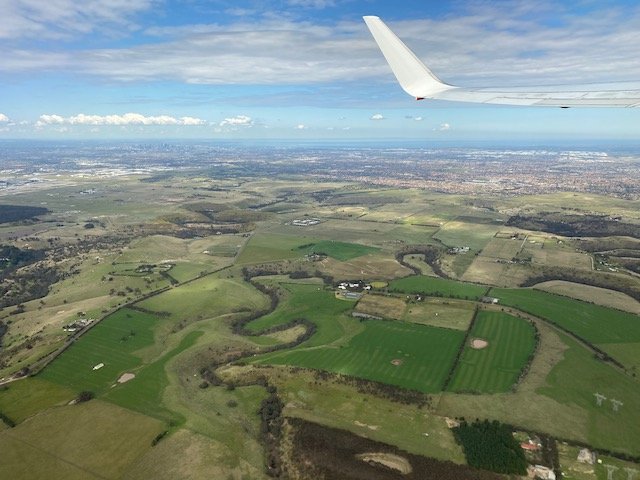
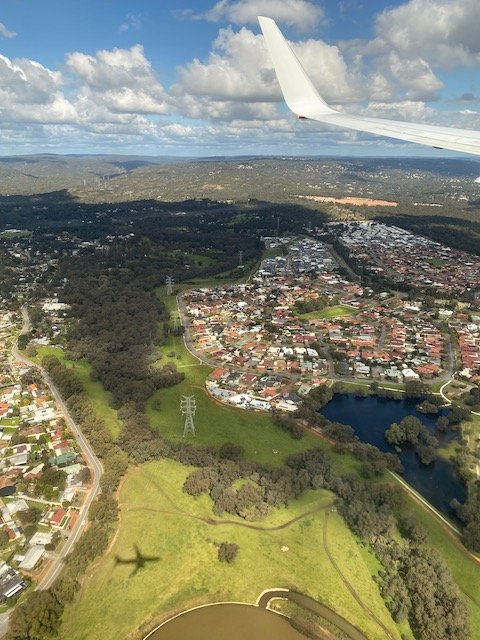
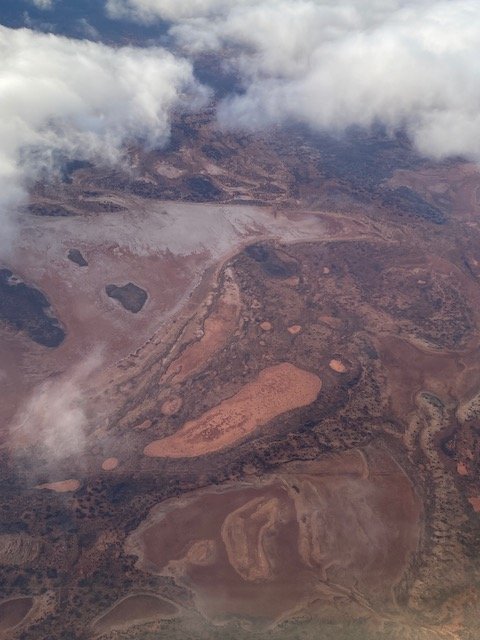
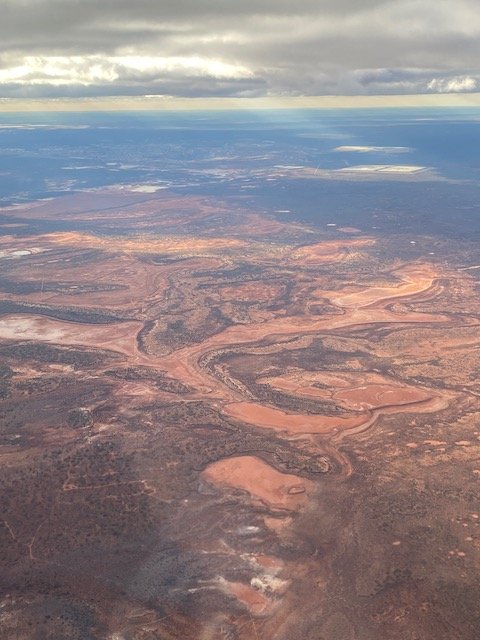
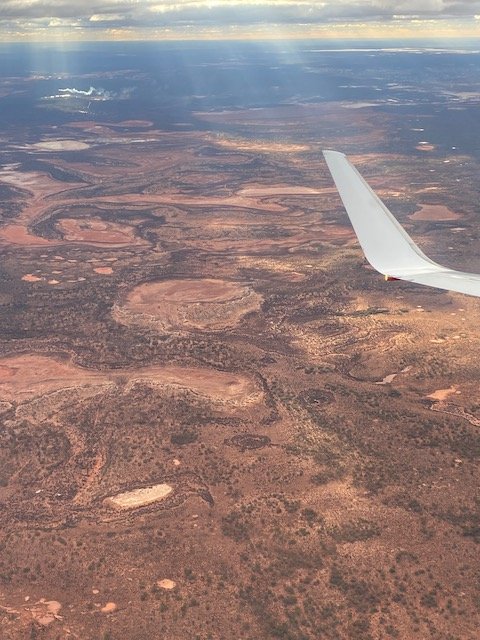
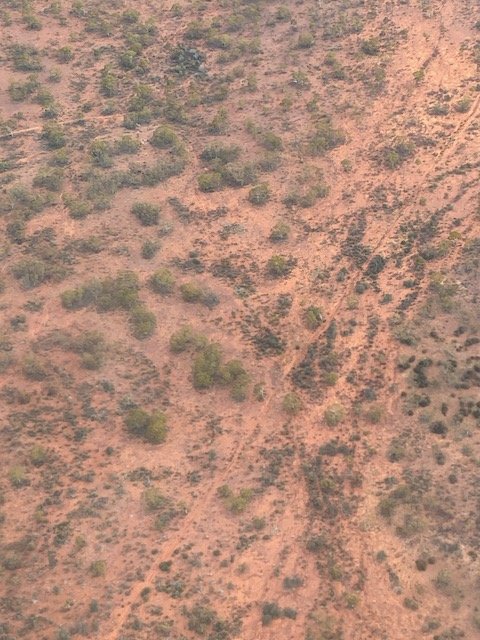
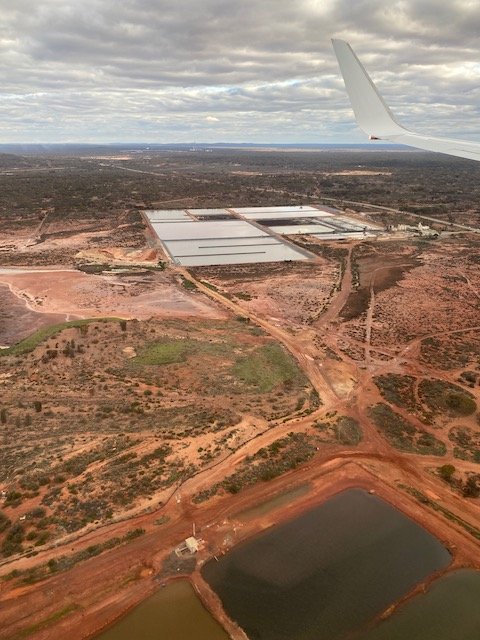
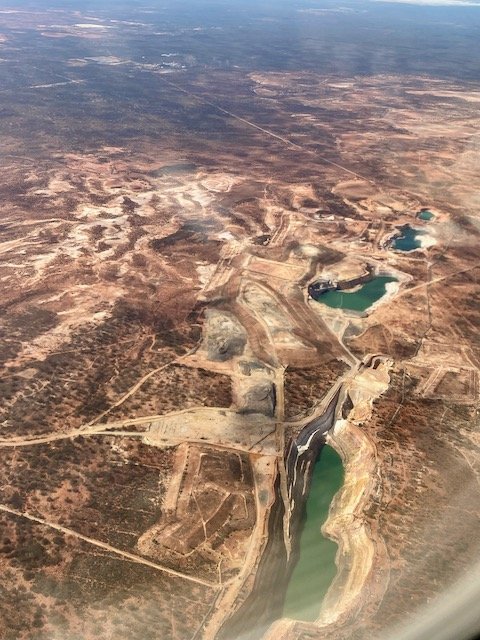
Arriving on Country
My first flight departed a lush green Melbourne to arrive into a similarly and unseasonably green Perth. It wasn’t until the second half of the hour-long flight from Perth to Kalgoorlie in the Northern Goldfields of Western Australia that the terrain became strikingly different. The spectacular patterns of sparse emerald bushes against the red earth, interlaced with winding pathways, bore a powerful resemblance to the dot paintings so characteristic of First Nations Australian Art.
As we got closer to Kalgoorlie, evidence of years of mining activity became apparent with huge gashes and holes – at that altitude, not too dissimilar to those excavated by ants – appearing across the landscape. In contrast to the winding paths, these locations were connected by long straight roads cutting artificially across the land.
I had been intrigued to read on the project’s website that the ‘Reclaim the Void’ initiative is not actually anti-mining; Vivienne later explained that the project’s ethos recognises our shared responsibility for, and the benefits we receive from, mining activity. Unlike other creatures that live from the land, however, humans take more than they need with little or no hope for regeneration. The importance of projects like ‘Reclaim the Void’ is the opportunity they provide to consider and reflect on the consequences of over-exploitation of the earth’s resources. To this end, I was impressed by the organisers’ proposal to include local mining companies in the project.
Collaborative intentions to reflect on and reconcile the impacts of mining are however fraught with economic, political and cultural tensions, a fact I became self-consciously aware of when setting foot on my flight from Perth. Populated largely by FIFO (fly-in, fly-out) mine workers, as a traditionally chatty person I was surprised to find myself quieter than usual. The prospect of sharing my motivation to ‘symbolically seal a mining pit’ with those who earn their living from excavating them felt horribly ‘holier than thou’ and highlighted the critical importance of mutually agreeable spaces and opportunities that invite rather than impose collaboration and reflection.
I arrived in Kalgoorlie and checked into my no-frills but characterful single en-suite room in the famous Palace Hotel to enjoy one more night of home comforts before my camping adventure. Established in 1857 and home of the ‘Hoover Mirror’ - allegedly presented to a barmaid as a token of love from young mine manager Herbert Hoover (later to become President of the USA) – it soon became evident that the hotel, indeed town, was defined by its mining heritage.
Unlike so many ‘ghost towns’ in Western Australia (the description given to abandoned towns following the exhaustion and closure of their mines), Kalgoorlie is a vibrant and multicultural place full of shops, restaurants and local businesses. A later visit to the Museum of the Goldfields showed however that the future closure of the town’s ‘super pit’ has been of concern to locals with ongoing speculations about how it might be positively repurposed (a hotel, perhaps).
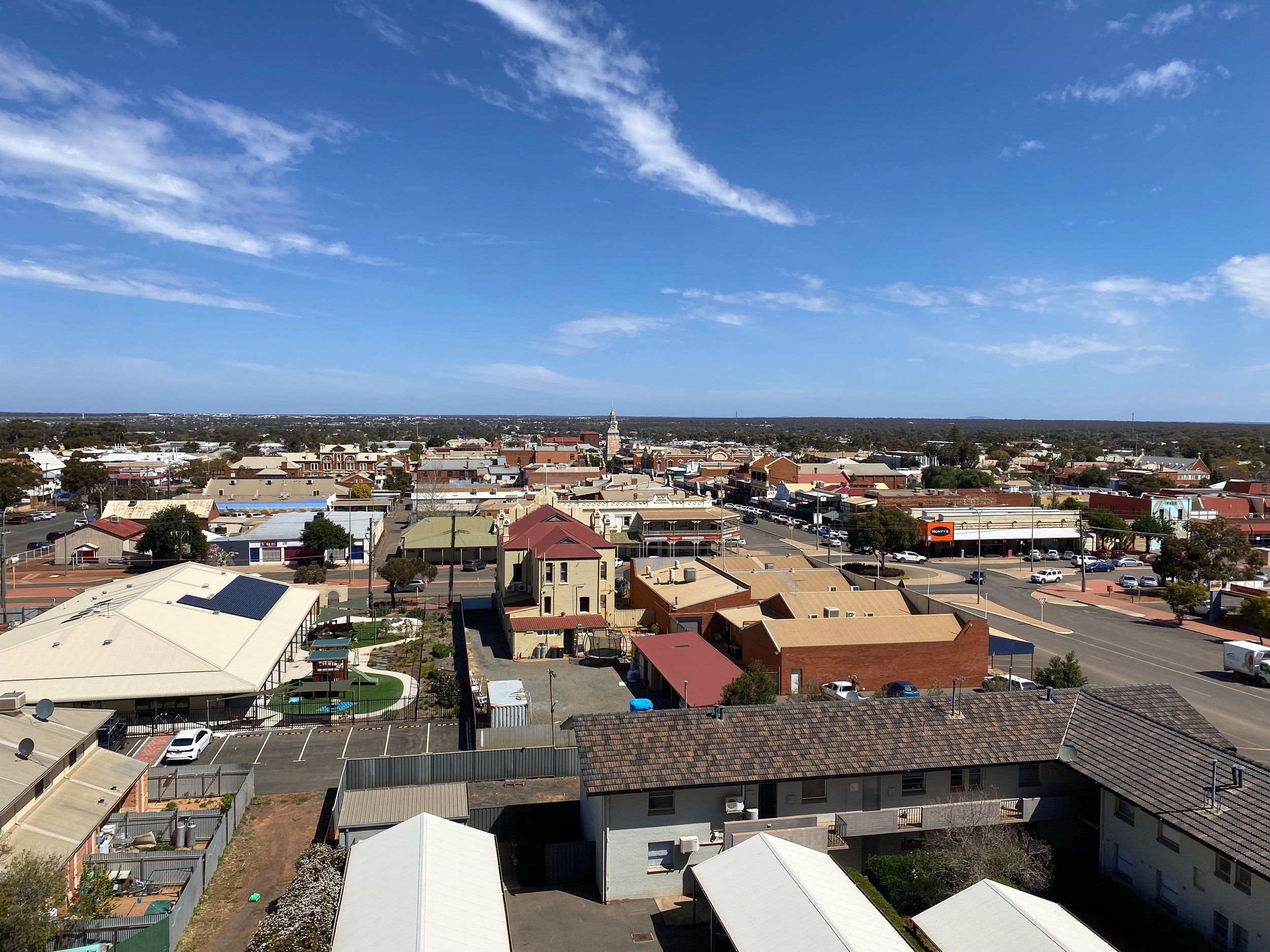


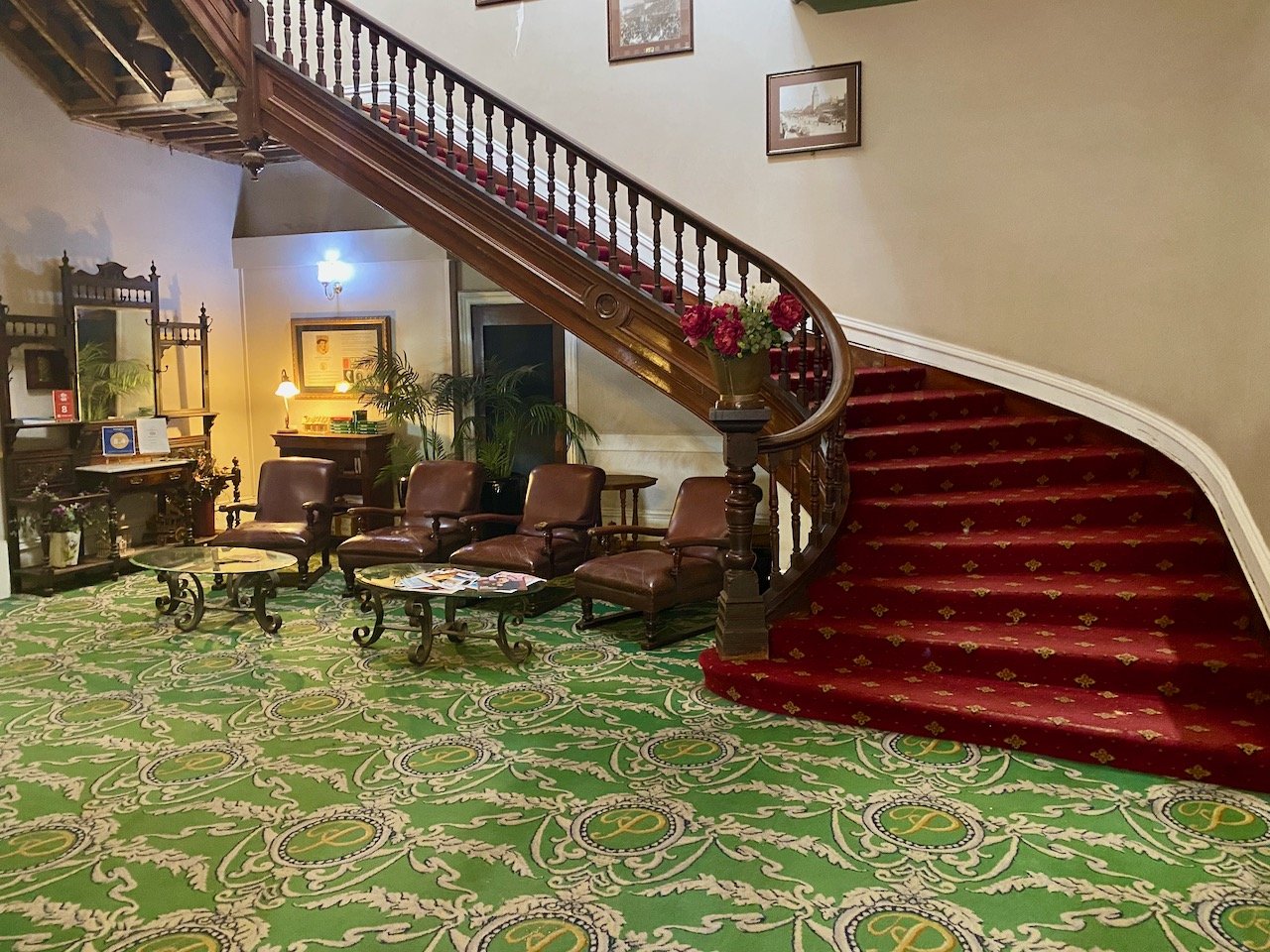
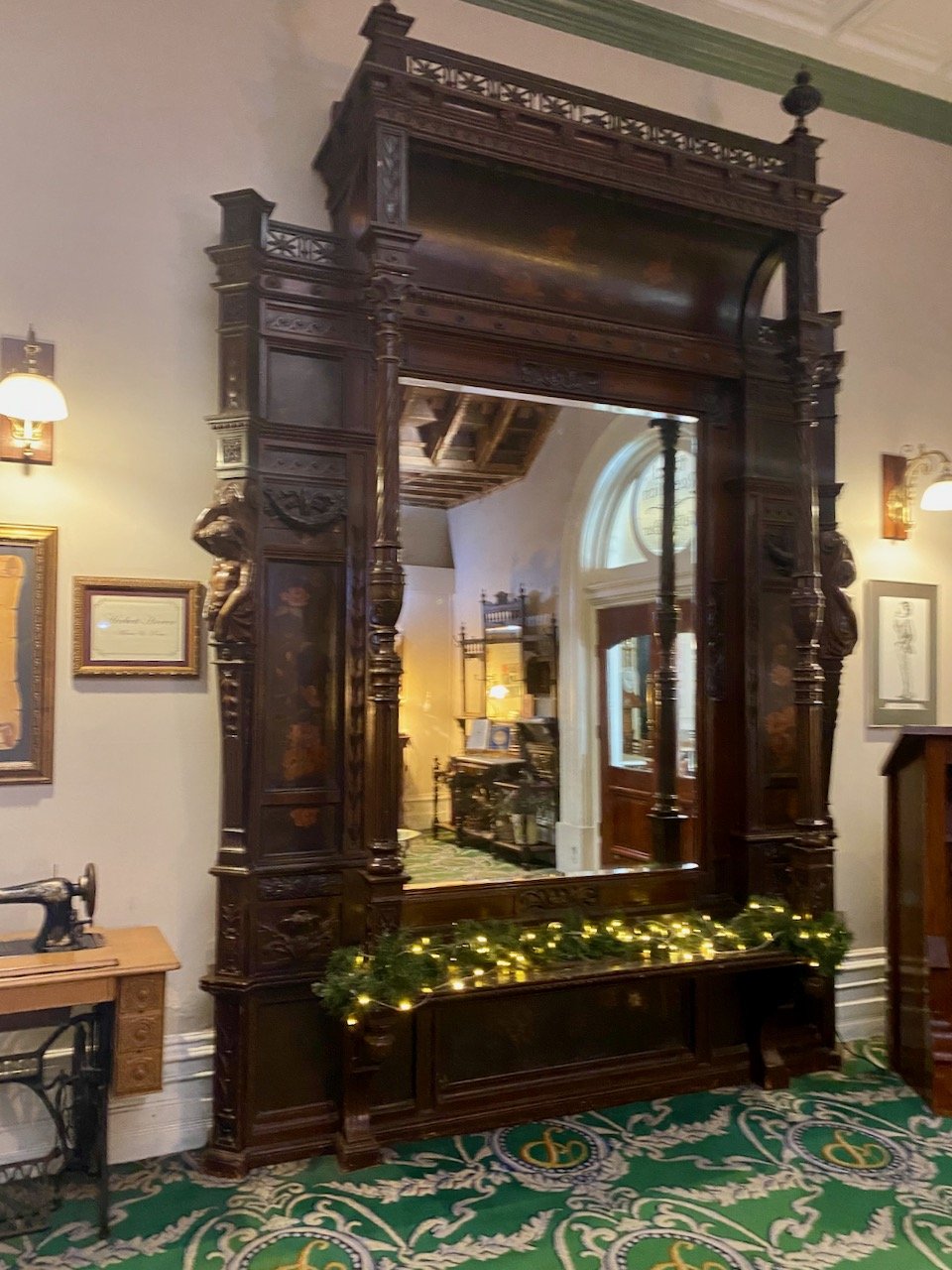
After settling into my room, I headed to the bar for a meal and last glass of wine to coincidently meet two other women from Melbourne, one with stylish short turquoise hair and matching earrings. It came as no surprise that they turned out to be in town for the same project.
The following day and with very little time before meeting the minibus, my new friends and I headed to the Museum of the Goldfields and its neighbouring super pit. Our time there however was impacted by a detour to Sassy Sue’s, an entirely unexpected goldmine of glamorous vintage garments and artefacts. The store’s location in the red dirt of remote Western Australia seemed to symbolise an enchanting contrast between places and cultures similarly evoked in movies such as The Adventures of Priscilla, Queen of the Desert (1994) and The Dressmaker (2015).
With stock that most Melburnians could only dream of, the store’s owner, Sue, explained how she had collected and continued to catalogue numerous shipping containers full of garments which she would use to rotate her stock.
Many of the garments had also been collected by her travelling nieces and nephew who, she informed me with classic outback Aussie modesty, were ‘singers’. It wasn’t until the song ‘Geronimo’ played randomly on the radio while I was trying on a 1980’s cropped gold lamé jacket that it transpired she was referring to the award-winning and internationally famous Indie pop band Sheppard.
Reading this coincidence as a sign, the jacket seemed justified as a memento of what was quickly becoming a trip full of surprises.
Lake Ballard (2022, Alex Sherlock)
Lake Ballard
With the highly inappropriate jacket tucked away amongst my camping gear, we met our fellow travellers at the minibus and embarked on our journey.
Unfortunately due to the unseasonal rain, the road to the Terraces near Leonora was closed and so Vivienne and her team had organised a temporary alternative location two hours northwest of Kalgoorlie just outside Menzies at Lake Ballard. It was a shame that the Traditional Custodians who were due to deliver the cultural part of the trip were unable to travel to the new location, nevertheless, it turned out to be ideal in other ways. Like so many other places, the lake had been named after a locally significant white British man yet it is still culturally significant for its place in a Seven Sisters Dreaming, and, while the rug weaving retreats are open to all, with the exception of Bunji our cook, this group happened to be all female.
According to the Lake Ballard website, the salt lake spans an extraordinary seventy by thirty miles with a (usually dry) sodium crust, the west of which is completely flat with a large hill characteristically protruding from the surface. On our first night sitting around the campfire at the neighbouring campsite, Vivienne asked us to take a moment to silently pay our respects to the ancestors and Custodians of the land before taking turns to introduce ourselves and acknowledge what had called us to Country. Accustomed as I was to commencing all meetings in Australia with an Acknowledgment of Country, the act of paying our respects privately felt like a particularly powerful way to connect with this place and recognise those who had been before.
As we went around the campfire, I found myself in the company of a particularly inspiring group of women ranging in age from their mid-twenties to mid-seventies, many of whom, like me, had found themselves at a crossroads in their lives: facing a new beginning, considering a change of careers or emerging from personal trauma. We seemed united by the opportunity to reflect and reconnect and our shared desire to engage in practices of reconciliation. Consequently, despite the detour, the bond we were able to develop in this sacred place, even over the four days I was there, felt truly empowering.
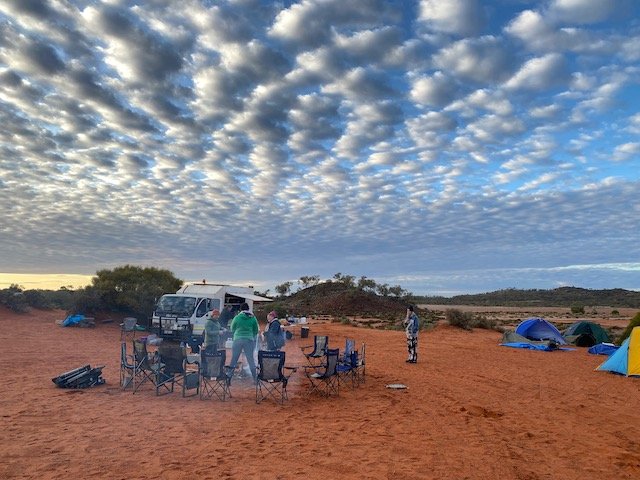
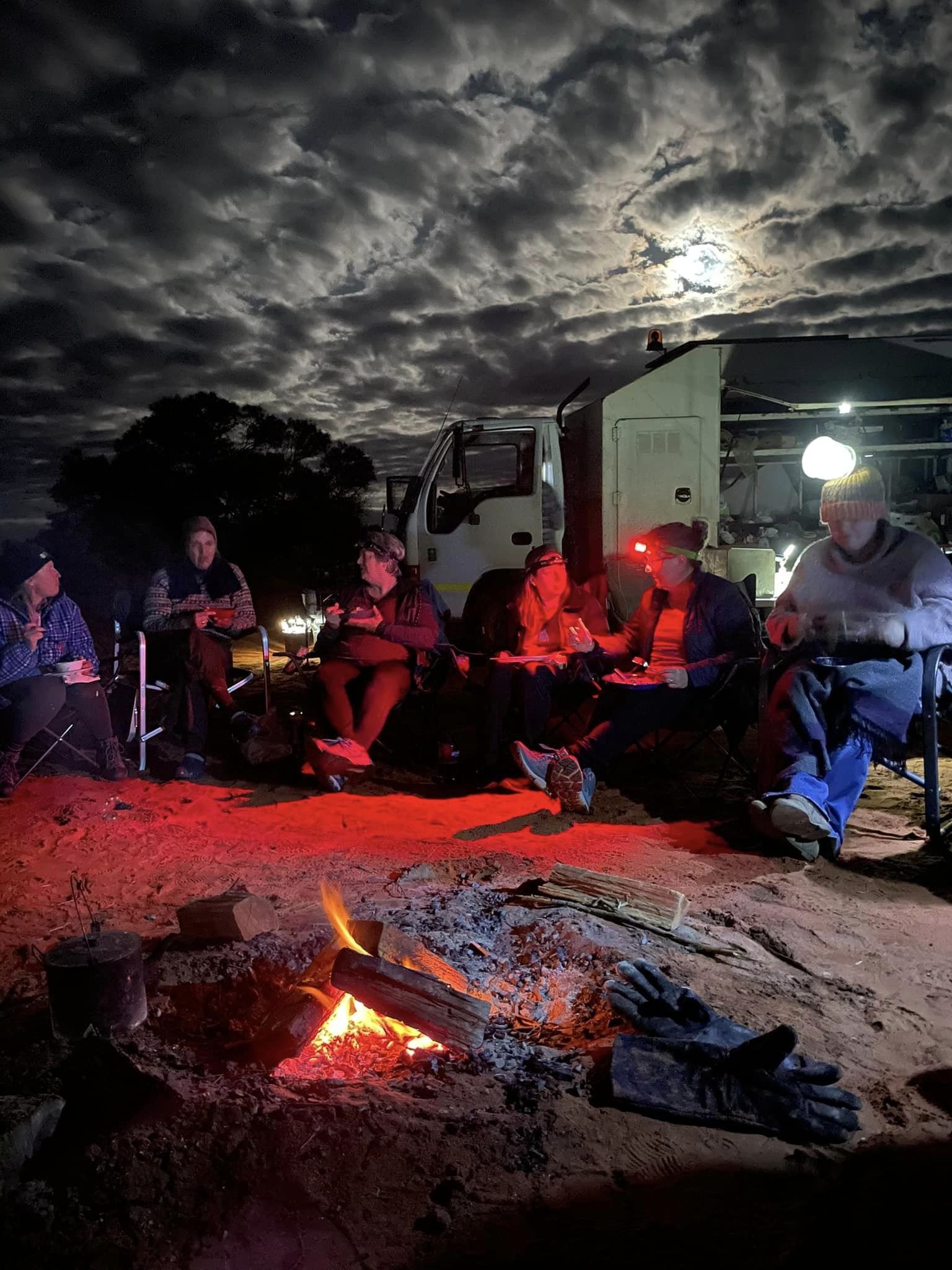
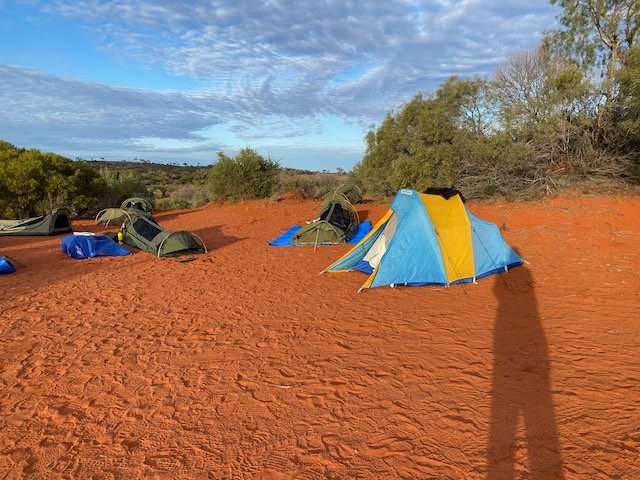
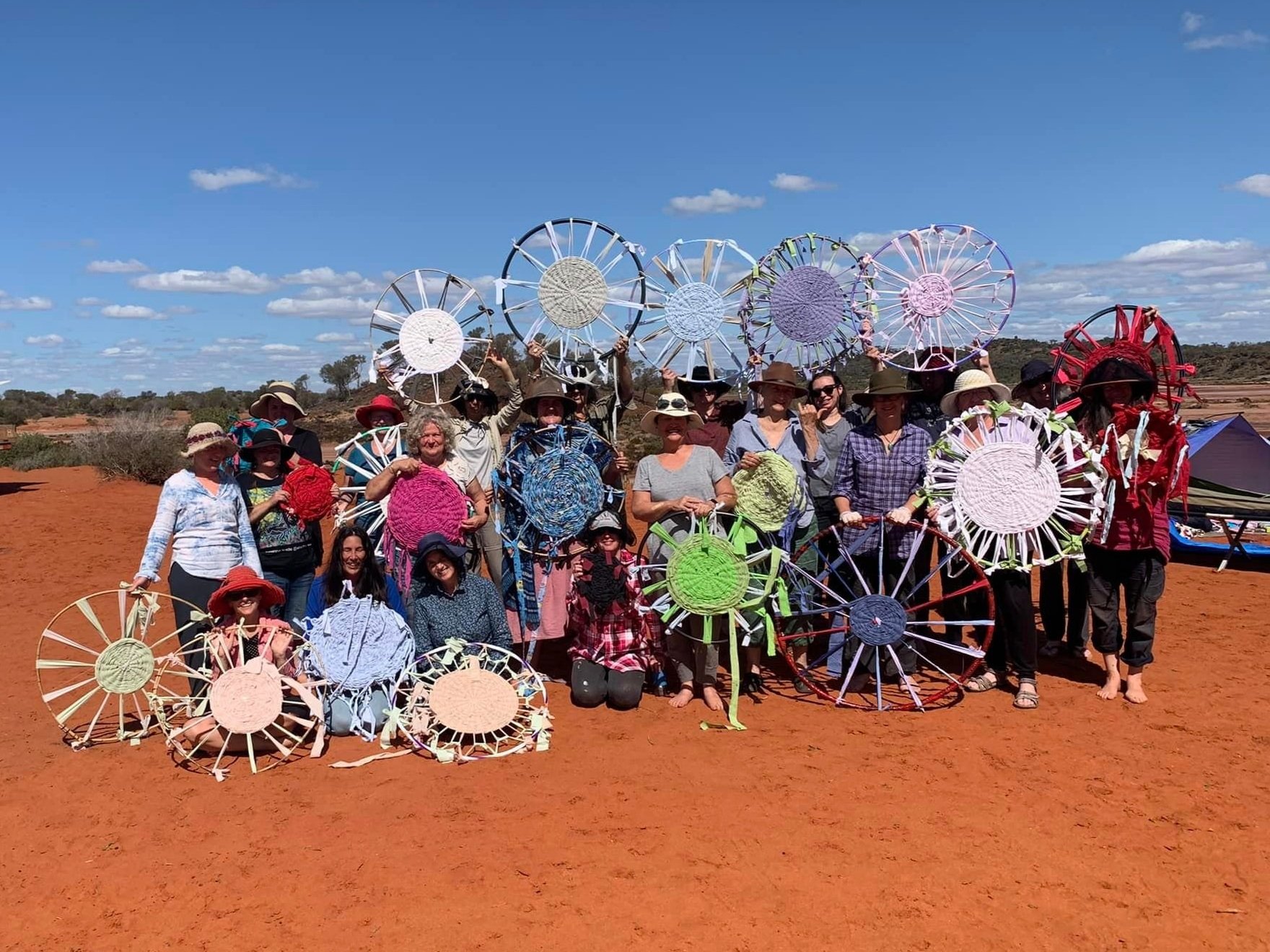
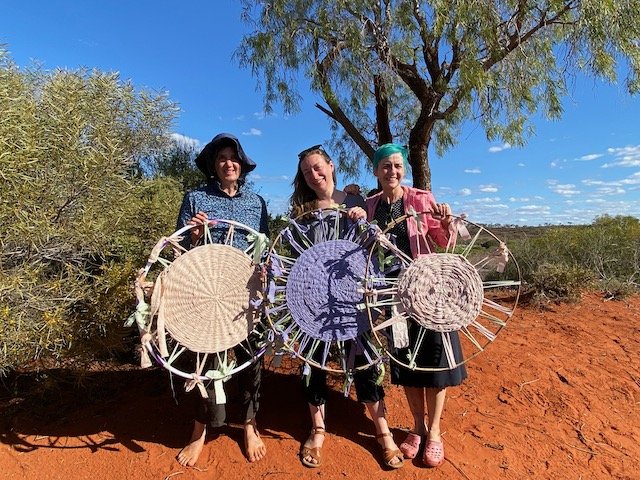


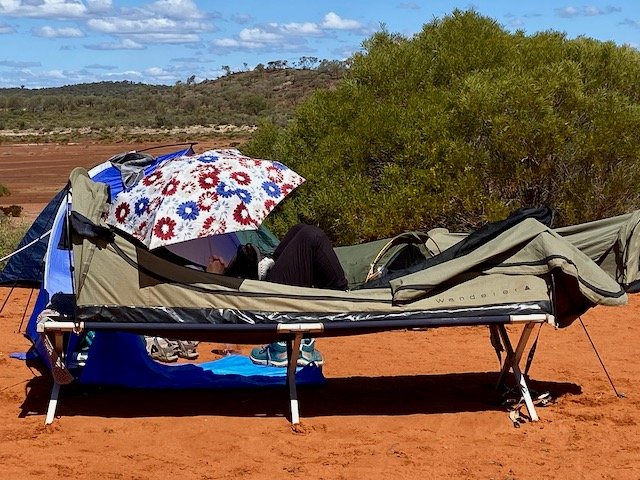
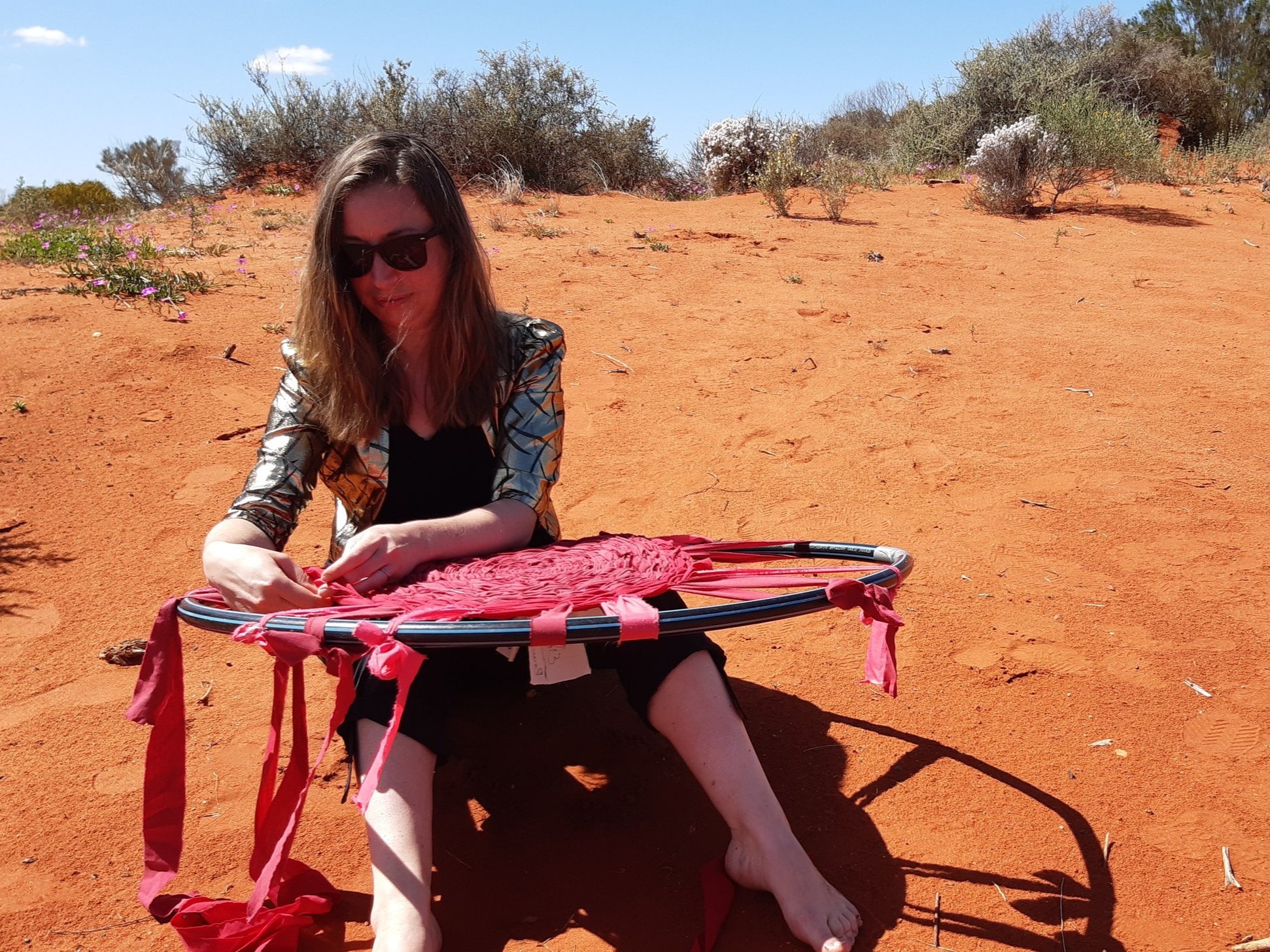
While Lake Ballard is a significant place in Australian Aboriginal culture, it also rose to international prominence in 2002 when the British Turner Prize-winning artist Anthony Gormley selected it as the location for ‘Inside Australia’, a commission commemorating the fiftieth anniversary of the Perth International Arts Festival. Writing about the installation, Pierse (2004) explains that Gormley was drawn predominantly by the geological appeal of the area, setting the installation over a 10km proportion of the lake’s west side. The characteristic hill provided a central point of orientation and vantage over the fifty-one sculptures representing indigenous and non-indigenous residents of Menzies whose bodies were scanned for casts.
Since its installation, the work has widely been deemed an economic and cultural success, as reflected in the award-winning documentary ‘Inside Australia’ and a parliamentary inquiry in 2009. Praised for drawing tourists to the area and raising awareness of the unique significance and value of remote areas, the installation has encouraged visitors to engage with the landscape, and, through Gormley’s collaborative practice, has been commended for drawing communities together (MacTiernan, 2009: online).
This was something I experienced for myself on the second day when, after abandoning my shoes (with reassurances that I wouldn’t get bitten by ants, scorpions, spiders or snakes), I walked out onto the lake with some of the other women on the retreat. In what can only be described as an awe-inspiring and spiritual experience, the terrain was like nothing I had ever seen. Stretching as far as the eye could see, the recent rain had meant the ordinarily dry lake was covered in wet sticky red mud (the kind people go to spas for).
Ignoring my concerns about the lack of washing facilities at the campsite, I embraced the feeling of the mud, and, while I didn’t go as far as smearing it all over my body, I enjoyed the sensation of the smooth texture squeezing between my toes - my feet growing heavier as the mud accumulated.
Mud shoes at Lake Ballard (2022, Alex Sherlock)
Other areas of the lake were crusting in the most extraordinary patterns, again clearly resembling First Nations artworks and further motivating me to learn more about the deep and significant connections between art and Country. Walking between the figures, we started to notice a network of footprints left by others who had taken the same or different paths across the terrain, all of which surrounded the imposing central hill which, after the rain, seemed to be excreting a vibrant jade-green mineral deposit.
While walking, I started to notice small things such as a spider disappearing between cracks in the mud; by this point, I had realised that most of them were harmless - even the Redback in the toilet block, whom I was reassured to see safely tucked away in the same corner each time I visited. As I continued my journey around the base of the hill, I slowly started to become less distracted and more present with the surrounding environment and the ground beneath my feet. On returning to the camp we found a puddle to wash off our mud shoes; even the patterns of dissolving red mud in the water now seemed mesmeric.


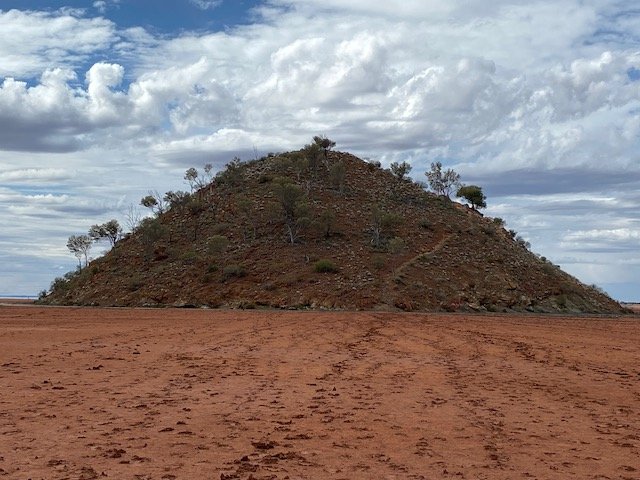
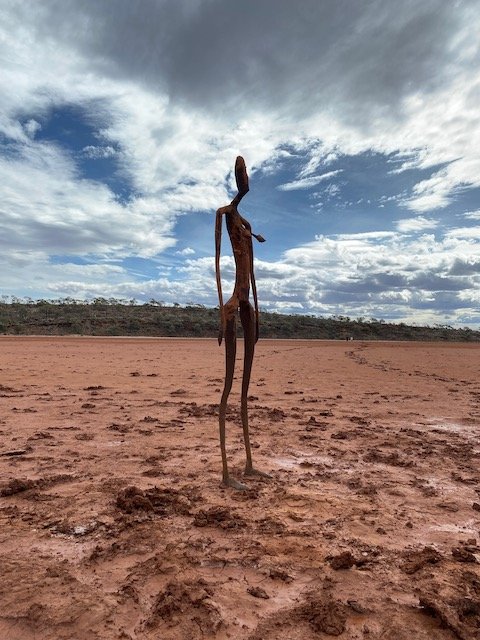
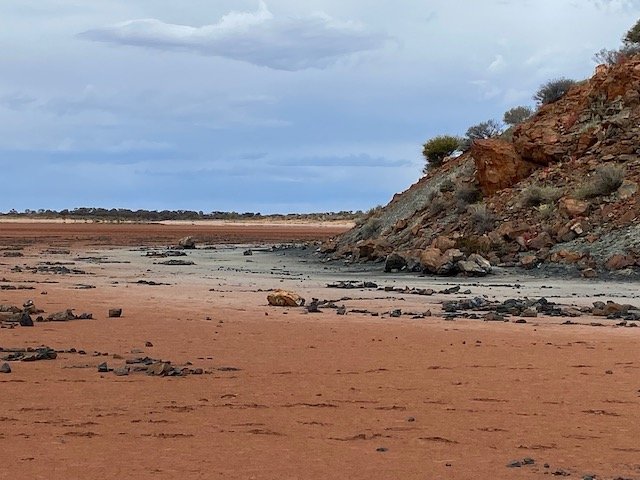
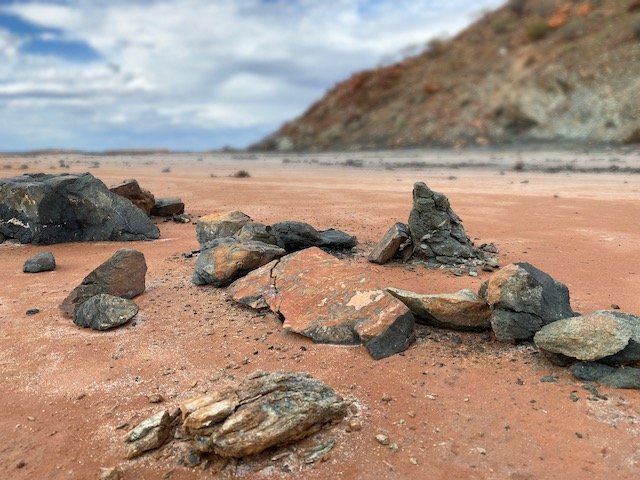

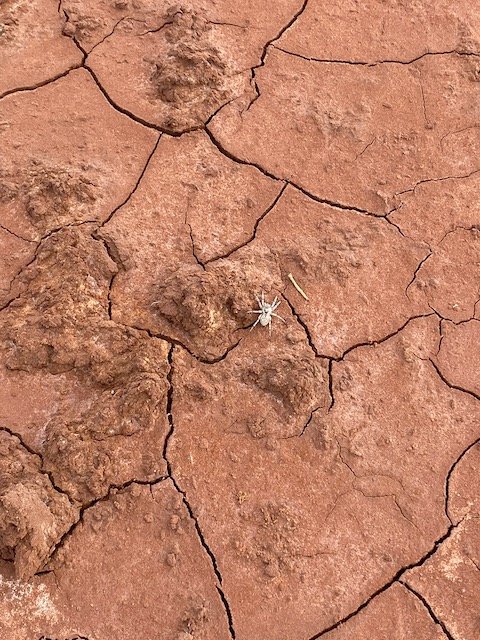
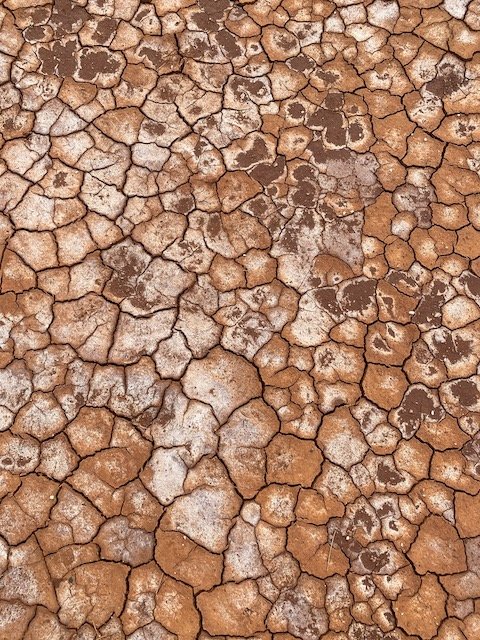

‘Songlines’: Connecting to Country and Ways of Knowing
I found it interesting that while the spiritual significance of the land on which Gormley’s figures stand is acknowledged (if not in the associated documentary, at least in the literature and on the website) it doesn’t seem to have featured in the project’s narrative.
For Gormley, the hill seemed to provide a practical central point around which to orientate the work and upon which it could be plotted and viewed, however on arrival at the site and after learning of its place in a Seven Sisters Dreaming, we were respectfully asked to re-consider any desire we may have to climb it. The request reminded me of the walking restrictions at Uluru and inspired me to learn more about the Dreaming in First Nations cultures and its connection to Country.
In a review of the exhibition ‘Songlines: Tracking the Seven Sisters’ curated by Margo Neale and collaborators at the National Museum of Australia (2017-2018), Palmer explains that Aboriginal Dreaming, or Dreamtime, is commonly misunderstood by non-indigenous people as mythical creation stories in which ‘the exploits of the Ancestors […] created the known physical world – human, plant and environment – out of themselves as they travelled over a flat featureless earth’ (2019: 147). In contrast, as demonstrated in the exhibition, the Dreaming is actually a sophisticated strategy for the oral transmission of critical knowledge (for example kinship systems, ethics, morals, rituals and ecology) that has ensured the survival of the oldest continuing culture in the world - a culture that has weathered the impacts of phenomenal climatic changes and colonialism, amongst other things (Neale in Neale and Kelly, 2020: 3).
In their book Songlines: the Power and the Promise (2020), part of Thames & Hudson’s ‘First Knowledges’ series, Neale and Kelly explain that ‘Songlines’ are the system through which this knowledge is memorised, embodied, and transmitted. Popularised by Bruce Chatwin in his 1987 novel by the same name, the term is used to describe the crisscrossing tracks associated with animals, natural elements, contemporary events and ancestral beings, the stories of which are embedded with knowledge and located in places of significance (Neale in Neale & Kelly, 2020: 52). The hill on Lake Ballard is one such place, understood to represent the elder of the seven sisters in the Seven Sisters Dreaming as she hid from their relentless pursuer (lakeballard.com: online).
Kelly explains that Songlines are effective for a number of reasons, the foremost of which is that our brains love narrative; stories are a much easier way to learn than through abstract snippets of information. In oral rather than written cultures, knowledge is therefore imaginatively reconceptualised in the form of tales with memorable human and non-human characters - the more sensational the better. The stories are performed, embodied and passed on through the medium of music, dance and art. (Kelly in Neale & Kelly, 2020: 88)
The brain is also good at remembering things when associated with a particular location. Importantly, songlines are inspired by and located in the physical and geological features of the environment and just as memory champions might visualise a ‘memory palace’ to recall a deck of cards, the use of stories and places in Australian Aboriginal culture provides an effective way to locate knowledge (ibid: 97).
Using geographical cues, songlines are therefore physically and imaginatively ‘travelled’ by cultural custodians, in doing so they are recalled, updated and communicated. One’s emotional engagement with methods of performance, particularly music and dance, further aids an ability to retain the associated knowledge (ibid: 90-92). As anyone who has been to a music festival would attest, experiences associated with music and places are often the most vivid and evocative.
In Western terms, therefore, songlines are an archive or library, but one that is held in Country rather than on paper or in books. This indigenous archive functions in ways far superior and more complex than Western alternatives; as Kelly explains, music and dance for example enable the communication of information not easily replicable in words, such as hunting techniques or particular bird calls (ibid.). And, while the patterns and symbols used in First Nations artworks might seem aesthetically pleasing to the uninitiated, when made by custodians they act like a script, encoding important ancestral stories and information critical for survival, for example, what foods are in season and where to find them, or, where burning practices are required to encourage renewal or prevent uncontrolled bushfires (Neale in Neale & Kelly, 2020: 64).
This grounding of knowledge in Country (land, sea and sky) provides an infinite structure for the storage of knowledge that belongs to a kind of circular time rather than the past present or future (Kelly in Neale & Kelly, 2020: 100-101). As anthropologist W.E.H. Stanner famously put it, the Dreaming is ‘everywhen’ (1956, cited in Neale and Kelly, 2020: 101) and while its timelessness is understood as the reason non-indigenous people have such difficulty understanding the concept (Palmer, 2018: 147-148), there are huge dividends to be gained from shifting away from a linear worldview.
As an archive located in the land, Songlines function as a kind of multi-dimensional map or network, the ‘original World Wide Web’ (Neale in Neale & Kelly, 2020: 34) providing an essential means to orientate oneself and navigate the social, cultural and physical terrain. Indeed, my frequent tendency on the retreat to get lost on my way to and from the toilet each night and my inability to determine when it was time to eat or get up in the morning caused me to realise the potential benefits of such wayfinding strategies.
In all seriousness, without my watch or phone, I found my spatial and temporal disorientation to be a worrying reminder of the consequences of an over-dependence on digital devices. Additionally, my frustration at trying to identify flora and fauna was shared by the other phone-less participants, yet even with mobile reception, I expected that the names of plants and birds would have been lost with all the other abstract snippets of information I frequently search for and then instantly forget. I realised I had become divorced from the environment and found myself starting to appreciate the value of Indigenous knowledge systems for restoring that connection.
To return to the purpose of my trip, if knowledge is located in Country, as Neale explains, then to take the land is to take the archive (in Neale & Kelly, 2020: 47). While these knowledge systems are able to adapt to change, unnecessary destruction of Country causes a loss of the knowledge residing within. One wonders, therefore, how events such as mining company Rio Tinto’s destruction of the 46,000 year old Juukan Gorge rock shelters might compare to the deletion of, for example, Wikipedia (or at least significant Wikipedia pages). It is encouraging though to read of the development of a ‘third archive’, evident in initiatives such as the Songlines exhibition that combine Western and Indigenous knowledge systems and technologies to assist the survival of both (ibid: 45-66).
(Alex Sherlock, 2022)
Discovering My Story
With all this in mind, I turn now to the day I learnt the Queen had died. It was the third and penultimate day of my time on the retreat and a few of us were sitting in the red dirt under a gazebo with fly nets over our heads while engaged in the creative practice of weaving and chatting (or ‘yarning’ in Aboriginal terms). The weaving sessions, interspersed with meals prepared by our wonderful cook Bunji, had become a therapeutic, safe and gentle space to share our stories - the weaving was simple enough to be able to listen, contribute and reflect.
The previous day had seen the late arrival of three additional retreat guests from Kalgoorlie. We’d been without internet reception for a few days and during a lull in conversation one suddenly declared to the rest of the group “oh!, you wouldn’t know, the Queen died yesterday!”.
We sat in stunned silence for a few moments while slowly it seemed like all eyes turned to me – perhaps the most conspicuously British person amongst the group. While the gravity of the revelation descended, I felt my eyes fill with tears as one of my Melbourne friends came over to give me a hug.
After a few moments, I started to reflect on why I felt so overcome with emotion. I recalled the yearly Christmas ritual of watching the Queen’s speech at my beloved maternal grandparents’ house. I recalled the framed black and white photograph by their front door depicting my great-grandfather Lieutenant-Colonel Alexander Cattanach, Commanding Officer of the 5th Battalion Queen’s Own Cameron Highlanders, sitting in uniform between King George VI and his wife Queen Elizabeth (more recently known as the Queen Mother) with Princesses Elizabeth and Margaret Rose on either side. I remembered the family tales of a pullover, knitted by then Queen Elizabeth for my great-grandfather in gratitude for his service guarding the Royal family while in residence at Balmoral during the war in 1941. I remembered seeing letters from my great-grandfather to my great-grandmother regaling stories of songs around the piano at Princess Margaret’s birthday, post-dinner conversations with the King over brandy, putting up tennis nets and accompanying the princesses on bike rides and picnics. The letters depicted a caring and empathetic family, grateful for the service of my great-grandfather and his men.
More recently, I remembered letters from the Queen’s lady-in-waiting to my mother confirming that the Queen remembered him fondly. I knew how upset my mum would have been about the news of her death and felt bad I wasn’t available to share her grief.
The 5th Battalion Queen’s Own Cameron Highlanders with the Royal Family at Balmoral, 1941. Image courtesy of Siriol Sherlock and Susan Jenner.
From left: H.R.H. Princess Elizabeth, H.M. The King, Lt.-Col. Alexander Cattanach, H.M. The Queen, H.R.H. Princess Margaret Rose. Image courtesy of Siriol Sherlock and Susan Jenner.
On the other side of my family, I recalled my paternal grandfather’s positions in the colonial service in Somalia and Tanganyika (modern day Tanzania), and his later role travelling the world as a Queen’s Messenger. In 1965 he had been appointed Administrator of the Turks and Caicos islands and I remembered seeing pictures of him and my grandmother receiving the Queen and Duke of Edinburgh during a Royal tour of the Caribbean in 1966, and another picture of them watching a local Donkey race with great amusement. I later learned it was during the same visit that the Queen had made him a Commander of the Victorian Order in recognition of his personal service to the monarchy.
John Anthony Golding C.V.O. with the Queen and Duke of Edinburgh during a tour of the Turks and Caicos Islands in 1966. Image courtesy of Jon and Nick Golding.
John Anthony Golding C.V.O. in uniform with the Queen during their tour of the Turks and Caicos Islands. Image courtesy of Jon and Nick Golding.
On reflection, I realised the Queen was more than a monarch to me, she was also a person whose own existence was entangled with that of my own ancestors. In this safe space I became aware I was sharing a family history I felt simultaneously proud of and uncomfortable with. I had never kept my ancestors’ stories a secret but while living in Australia they weren’t something I felt particularly at ease with sharing.
This unease came into focus with news of the Queen’s death in a place where I was attempting to contribute to efforts to reconcile the impacts of colonial rule. Yet amongst these friends, all similarly on their own journeys, I didn’t feel judged. The space they provided by simply listening enabled me to realise for myself that any attempts to engage with the process of reconciliation without properly understanding and reflecting on my family’s colonial associations would be empty and inauthentic.
And that I did. On returning from my trip I later took the time to actually read my paternal grandfather’s memoirs, published in 1987. Entitled Colonialism: The Golden Years, by J A Golding (not a title to be seen reading on the tram!), I was fascinated to read his first-hand account of life on the ground, which complicated often simplistic and binary discourses about colonialism. I found reassurance that he chose East Africa due to his fondness of the Somali (with whom he had served during the war) and that he was not driven by “missionary fervour” as others had been.
I was surprised by his acknowledgment of the overly paternalistic way the colonies were administered, where decisions made hundreds of miles away could be “inattentive to life on the ground, particularly in mixed tribal areas with different customs and ways of life”. I felt a sense of pride when reading of his own acquired knowledge and respect for local beliefs and customs, the respectful relationships he had built, and a subsequent reflection that while he could not claim that all the decisions he made were invariably correct, they were made on what, at the time, appeared to be in the best interests of the people he was responsible for.
Just like the FIFO mine workers, I realised he was a man doing a job in the best way he knew how. I was certainly glad that his story wasn’t one of the more unpalatable ones, but even if it had been, I’d have had no capacity to change it. In indigenous cultures, the stories of the ancestors – no matter how confronting they may be - provide an opportunity to learn, and I was grateful my grandfather had taken the time to record his.
While on the retreat, after hearing of the Queen's death I chatted with Vivienne about the conflicting sense of pride and discomfort I felt about my family history. She responded that it was possible and ok to feel both at once. Despite all the things the Queen had come to represent, in the context of Lake Ballard with its place in a Seven Sisters Dreaming, it was difficult not to admire the strength and resilience of such an incredible woman.
After one more night, another lovely meal by Bunji and a couple more visits to see the local Redback spider I caught a lift back to town with one of the other retreat participants, a community worker based in Kalgoorlie - coincidentally the same woman who had revealed the news about the Queen. As we tore along the bumpy roads (as only a local could!) she shared her experiences living and working in the area and reflected on the challenges faced by local Aboriginal people. Her work often put her in contact with many of the most vulnerable members of the community and we discussed the impacts of alcohol and substance abuse, reliance on social security and the distraction of digital devices. The consequent lack of purpose and direction of many young people seemed to point towards an increasing separation from their own culture and values.
In present-day Australia, the colonial legacy is one where First Peoples have commonly been represented as a problem or burden and their cultures, beliefs and practices are generally misunderstood and undervalued. With a background in anthropological and sociological studies, I knew the negative impacts of a lack of positive representation for minority groups. While talking with my travel companion I felt overcome by the seeming irreversibility of the damage done. Having little faith in sufficiently meaningful government action I asked her (perhaps unfairly) what the answer was. She explained her strategy - to take one day at a time and focus on the small things. This felt manageable.
The journey between Lake Ballard and Kalgoorlie (Alex Sherlock, 2022)
From ‘Learning About’ to ‘Learning From’ Indigenous Culture
After an enjoyable and thought-provoking journey, I was dropped at my accommodation in Kalgoorlie, Allora House, where I was to stay before my flight home the next morning. The house turned out to be the location where the contract for the local super pit had been signed so many years previously - another coincidence to try and make sense of later. I settled into my comfortable room, called my family and started to catch up on the extensive television coverage of the Queen’s death. I felt grateful to have had the opportunity for quiet contemplation before being exposed to so many other interpretations.
On my way home the next day I started to read Neale and Kelly’s book Songlines in earnest. While the entire book gave me a new perspective on my experiences of the Reclaim the Void retreat, I found one line particularly powerful:
‘It’s time to go beyond learning about indigenous cultures and start learning from them’ (2020: 179)
I started to recognise my capacity as a University lecturer and as a mother to explore and use indigenous knowledge and ways of knowing within my own teaching practice, particularly as we work towards a more circular and sustainable way of living.
Going on to read Kelly’s other books The Memory Code (2016) and Memory Craft (2019), I was amazed by the numerous strategies used by Aboriginal and Torres Strait Islander Peoples to build a collaborative relationship with the environment, exploiting it while also sustaining it. I was astonished by the First Nations’ uses of craft, place and performance as emotionally engaging memory aids and the possibilities they hold for learning and embodying knowledge. Indeed, I wondered how much better my GCSE results might have been had my teachers used these methods, and, how much information I might have retained if I hadn’t just been taught in the same classroom day in and day out.
While only at the beginning of a journey that many of my colleagues in Australia and around the world are already travelling, I am excited to think about how I might build my understanding of First Nations’ practices and beliefs and use them to assist others to learn while amplifying the continued relevance, or rather, the necessity of Aboriginal cultures and knowledge for our future survival.
Discovering My Songline
When I heard the Queen had died, I knew something significant had happened. I know this because I vividly remember the red sandy dirt beneath my feet, the fabric in my hands and the tears in my eyes. I remember the warm and friendly face of my fellow retreat participant as she approached and embraced me.
This experience was not unfamiliar, I felt the same when Princess Diana died. Yet this time, the activity in which I was engaged, along with the people and place provided me with an opportunity to deeply reflect on the significance of the event.
When I signed up to participate in the Reclaim the Void retreat to weave a rag rug and symbolically seal a mining pit, I was unsure of my place or relevance in current decolonising narratives. More broadly, and perhaps also in the context of the disconnecting effects of COVID, I felt lost and unsure of where I belonged. The trip emerged as a rite of passage; the physical separation from my everyday life enabled a liminal period for discovery and transformation.
In parallel with this experience, I discovered the purpose of the Songline, which Neale and Kelly explain not only serves to root us in the time we live now, but to the times and places of those who have come before, and those who will come after. ‘Understanding how the songlines work as a framework for relating people to each other and to place’, they explain, ‘will give you the key to belonging.’ (2020: 191)
Perhaps even more significantly, it was a quote by the custodians of the Seven Sisters Songline that most powerfully encapsulated this experience for me:
‘If you want to truly belong to this country […] you have to know your story about this place, this continent and its creation: “we are here to teach you your stories, not just share ours. Without the deep stories you can’t take root, you will only ever be a transplant.”’ (cited in Neale & Kelly, 2020: 191)
Stories enable reflection, and while that reflection may be difficult or confronting, it can help us identify our motivations and capacity to make change. Through place, I discovered my story, my Songline - a story that situated me in relation to my past present and future, and that simultaneously connected me with my ancestors, relatives and my children. In the retelling of this story, even as I lay out the text and place the images on my computer screen, I embed the knowledge I acquired and the mere recollection of that place brings it all back to me. In the retelling of my story, I hope others may learn too.
To participate in the Reclaim the Void project visit the project website. Rugs are accepted from all over the world and local workshops are encouraged as a way to connect and engage. Visit the Facebook or Instagram pages for details of workshops in your area.
Acknowledgements:
I acknowledge the people of the Woi wurrung and Boon wurrung language groups of the Eastern Kulin nation on whose land I live. I also acknowledge the people of the Wongi or Wongatha/Wangkatha language groups whose land inspired this writing.
Thanks to the Reclaim the Void founders and organisers for their insight and care in providing such a valuable project and experience, and to the many inspiring participants from whom I learnt so much. Special thanks to Vivienne Robertson, Rachel McKenzie, Tanya Gawthorne and Pia Interlandi for providing feedback and support while writing this piece.
Thanks also to Professor Margo Neale and Dr. Lynne Kelly for their valuable advice and guidance relating to my interpretations of indigenous knowledge systems and beliefs in this article. While I have made efforts to thoroughly research the practices referenced, my understanding is evolving. I hope that this personal and reflective piece will encourage others to read the publications listed below to develop their own understanding.
References:
Chatwin, B. (1987). The Songlines, London, Cape.
Kelly, L. (2016). The Memory Code: The Traditional Aboriginal Memory Technique that Unlocks the Secrets of Stonehenge, Easter Island and Ancient Monuments the World Over, Sydney, Allen & Unwin.
Kelly, L. (2019). Memory Craft: Improve Your Memory Using the Most Powerful Methods from Around the World, Allen & Unwin.
Lakeballard.Com. Lake Ballard and the Seven Sisters Dreaming [Online]. Menzies Visitor Centre. Available: http://lakeballard.com/about/lake-ballard-and-the-seven-sisters-dreaming/ [Accessed 29/12/2022].
Mactiernan, A. J. G. (2009). Inquiry into the Inside Australia Project at Lake Ballard (Menzies). Perth: Legislative Assembly, Parliament of Western Australia. Available: https://www.parliament.wa.gov.au/parliament/commit.nsf/(InqByName)/Inquiry+into+the+%E2%80%9CInside+Australia%E2%80%9D+project+at+Lake+Ballard+(Menzies)+ [Accessed 29/12/2022]
Neale, M. & Kelly, L. (2020). Songlines: The Power and the Promise, Port Melbourne, Thames & Hudson Australia Pty. Ltd.
Neale, M. (2017). Songlines: Tracking the Seven Sisters. Canberra, A.C.T.: National Museum of Australia Press.
Palmer, S. (2019). ‘Songlines: Tracking the Seven Sisters’ Exhibition, National Museum of Australia, Canberra. Aboriginal History, 43. Available: https://www.proquest.com/openview/57f55bb2af0fb5db87f983be06aa8ef5/1.pdf?pq-origsite=gscholar&cbl=5048050 [Accessed: 25/12/2022]
Pierse, S. (2004). Peeling off the skin: Antony Gormley’s ‘Inside Australia’. Art on the Line, 1. Available: https://www.researchgate.net/publication/49310530_Peeling_off_the_skin_Antony_Gormley's_Inside_Australia [Accessed 25/12/2022]
Reconciliation Australia, (2022). Reconciliation Drafting Resource: Demonstrating Inclusive and Respectful Language. Available: https://www.reconciliation.org.au/wp-content/uploads/2021/10/inclusive-and-respectful-language.pdf [Accessed 27/12/2022].
Stanner, W. E. H. (2009). The Dreaming and Other Essays, Collingwood, VIC, Black Inc.
Links:
Reclaim the Void Website - https://www.reclaimthevoid.com.au
Palace Hotel Kalgoorlie - https://palacehotelkalgoorlie.com
Allora House Accommodation - https://www.allorahouse.com
Goldfields Museum - https://visit.museum.wa.gov.au/goldfields
The Eastern Goldfields Historical Society - https://www.kalgoorliehistory.org.au/
Sassy Sue’s Vintage Shop, Kalgoorlie - https://www.facebook.com/profile.php?id=100057592893852
Lake Ballard Website - http://lakeballard.com
‘Songlines: Tracking the Seven Sisters’ Exhibition at the National Museum of Australia - https://www.nma.gov.au/exhibitions/songlines
